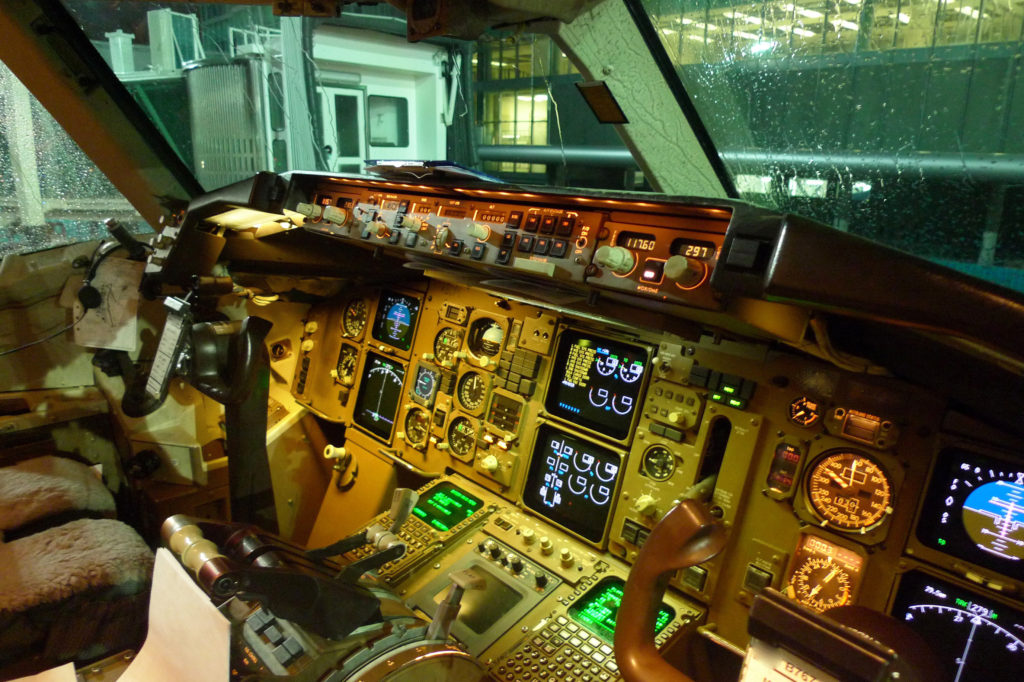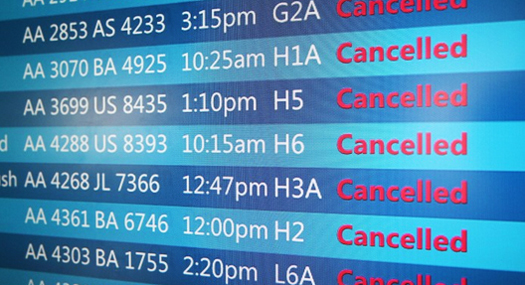
Update: October 20, 2017
A WORD OF ADVICE for aspiring aviators:
As discussed below, U.S. regional carriers, faced with a crippling shortage of pilots, have been bending over backwards to attract new hires — and to hang on to the pilots they already have. Salaries have been soaring and airlines are offering retention bonuses north of $30,000. It’s hard to see a negative in this, at least on paper, but if you talk to pilots at some of these companies you’ll learn that many of them are very unhappy. Why?
Although pilots are earning more, overall quality of life at many regionals is still suffering. And that’s because things are in panic mode. The industry is being reactive when it should have been proactive. The improvements we’re seeing should have been put in place years ago. Because they weren’t, numerous airlines now face chronic understaffing issues. This results in pilots being forced to work high-stress schedules with minimal time off. One pilot I spoke to, employed by a United Express carrier, says the company is so understaffed that even senior captains are being “junior manned,” as it’s called, and conscripted into duty on almost all of their scheduled days off, typically with little or no notice. Pilots are quitting in droves, he says, retention bonuses be damned.
As a group, pilots have never had as much leverage or opportunity as they have right now, and with thousands of retirements coming up in the next five to ten years at the majors, it should only get better. However, there are systemic problems in the regional sector, and just throwing money around isn’t going to fix them. It will take a while for things to stabilize. In the meantime, it behooves applicants to do their homework and realize what they’re getting into. Things can change quickly in this business, but some regionals are, at least for now, better-staffed and all-around more pleasant places to work than others. Know which are which.
August 5, 2017
THE PILOT SHORTAGE is here. It’s real, it’s global, and it’s been making headlines. However, we need to be clear which sectors of the aviation industry we’re talking about, and in which parts of the world.
Let’s start with North America, where the first step is to draw a sharp divide between the major carriers and their regional affiliates. The majors, also referred to as “legacy” carriers, are the ones people are most familiar with — American, United, Delta, Southwest, JetBlue, et al. There is no pilot shortage at these companies, and unless something changes drastically they will continue to have a surplus of highly qualified candidates to choose from. They are able to cull from the top ranks of the regionals, as well as from the military and corporate aviation pools. Even amidst an ongoing wave of retirements, a steady supply of experienced crews is unlikely to be depleted.
At the regionals, however, it’s a very different story. And by “regional” we’re referring to the numerous subcontractors who operate smaller jets (regional jets, or “RJs”) and turboprops on the majors’ behalf: those myriad “Connection” and “Express” companies, whose actual identities are concealed beneath the liveries of whichever major they are aligned with. United Express, Delta Connection, American Eagle, and so on. These carriers have been slashing flights, grounding planes, and otherwise scrambling to keep their cockpits staffed. In June, Horizon Air, the Seattle-based affiliate of Alaska Airlines and one of the country’s biggest regional carriers, announced it would be forced to reduce its busy summer schedule due to a dearth of pilots. Earlier this year, Republic Airways, a large U.S. regional carrier that flies on behalf of United, American and Delta, filed for bankruptcy protection. It blamed the filing, in part, on a lack of qualified pilots.
How this came to happen is both a long and short story. The short story is that employment at a regional carrier sucks. It’s not an easy lifestyle, and the pay has been the kind of thing that causes people to skip their school reunions. Salaries have traditionally started out as low as $20,000 a year (in some cases even lower), and have topped out at under six figures. Schedules are demanding and benefits paltry; the relationship between management and the workers is often hostile; and top of all that, the regional sector is highly unstable. Companies always seem to be coming or going, shrinking or shedding planes, changing their names and realigning with different majors. This has driven thousands of pilots out of the industry, and/or has discouraged countless others from pursuing an aviation career in the first place.
Yet pay and working conditions at these airlines have always been substandard, and filling jobs was seldom a problem. So what gives? Well, what’s different is that the regional sector has grown so large, now accounting for half of all domestic departures in the United States! As recently as twenty-five years ago it was around 15 percent. In those days, pilots saw a job with a regional as a temporary inconvenience — paying one’s dues. It was a stepping-stone toward a more lucrative position with a major. Pilots are now realizing that a job at a regional could easily mean an entire career at a regional. Thus, a diminishing number have been willing to commit the time and money to their education and training when the return on investment is somewhere between unpredictable and financially ruinous.
Pilots in the United States are responsible for securing their own FAA credentials, and for logging hundreds or even thousands of hours of flight time before applying at an airline. For those who come up through the civilian channels it’s a slow and very expensive process. An aspiring aviator has to ask, is it worth sinking $100,000 or more into one’s primary training, plus the time it will take to build the necessary number of flight hours, plus the cost of a college education, only to spend years toiling at poverty-level wages, with at best a marginal shot at moving on to a major? For many the answer has been a resounding (and logical) no.
In the meantime, the FAA has enacted tougher hiring standards for entry-level pilots. Over the past two decades, as the regional sector grew and grew, airlines sharply lowered their experience and flight time minimums to fill the thousands of new cockpit jobs this growth created. Suddenly, pilots were being taken on with as little as 350 hours of total time, assigned to the first officer’s seat of sophisticated RJs and turboprops. Then came a rash of accidents, including the Colgan Air (Continental Connection) disaster outside Buffalo in 2009. Regulators began taking a closer look at hiring practices, eventually passing legislation that mandated higher flight time totals and additional certification requirements for new hires.

Some airlines blame the shortage at least partly on these tougher rules. Technically they’re right, but arguing against an obvious safety enhancement is maybe not the smartest idea. Besides, all the new regulations really have done is return things to historical norms. When I applied for my first regional job in 1990, competitive applicants at the time had between 1,500 and 2,000 hours, and most of us had an Airline Transport Pilot certificate as well. That’s more or less what the FAA demands today. Flight time totals are just one indicator of a pilot’s skill or competence, but these requirements are not unreasonable.
The regionals have finally started upping their salaries and improving benefits, in some cases substantially. The cost structures of these carriers, whose existence is primarily to allow the majors to outsource flying on the cheap, limits how much they can lavish on their employees, but frankly they have little choice. New hires at companies like Endeavor Air (a Delta affiliate) and PSA (American), for example, can now make first-year salaries in the $70,000-plus range. That’s three times what these pilots would have made in years past. Other companies are offering signing bonuses of several thousand dollars, and work rules too are getting better. Air Wisconsin, a United partner and one of the nation’s oldest regionals, says that pilots can now earn up to $57,000 in sign-on bonuses. It promises earnings of between $260,000 and $317,000, including salary and bonuses over the first three years of employment. Figures like that are unprecedented.
So, for those considering a piloting career in the United States, the situation is looking better. The problem for the industry, though, is the lag time. Somebody just learning to fly is years away from meeting any airline’s hiring criteria. So while the mechanisms are falling into place to curtail a full-blown crisis, the shortage is going to be with us for a while.
Similar shortages exists elsewhere around the globe, but they are driven by slightly different forces. You don’t have the major/regional dichotomy like you do in North America, but the airline business overall has been expanding so rapidly, especially in Asia, that carriers can’t keep up. Many have success with what are called “ab-initio” programs, whereby young candidates are chosen from scratch, with no prior experience, and are trained and groomed from the ground-up, so to speak, in a tightly controlled regimen that puts them in the cockpit of a jetliner relatively quickly. These programs are ultra-competitive, drawing hundreds of applicants for each available slot. They produce quality pilots, but again there’s a lag time problem: industry growth is far outpacing the rate at which ab initio schemes can produce cockpit-ready pilots. This has forced airlines from Asia to go hunting for pilots in the U.S. and elsewhere, sometimes offering huge salaries and incentive packages.
The Gulf carriers, meanwhile, bring in expats from every corner of the world. Of Emirates roughly 4,000 pilots, the largest percentage is recruited from South Africa, where there are lots of young pilots and a rich aviation culture, but comparatively few jobs.







